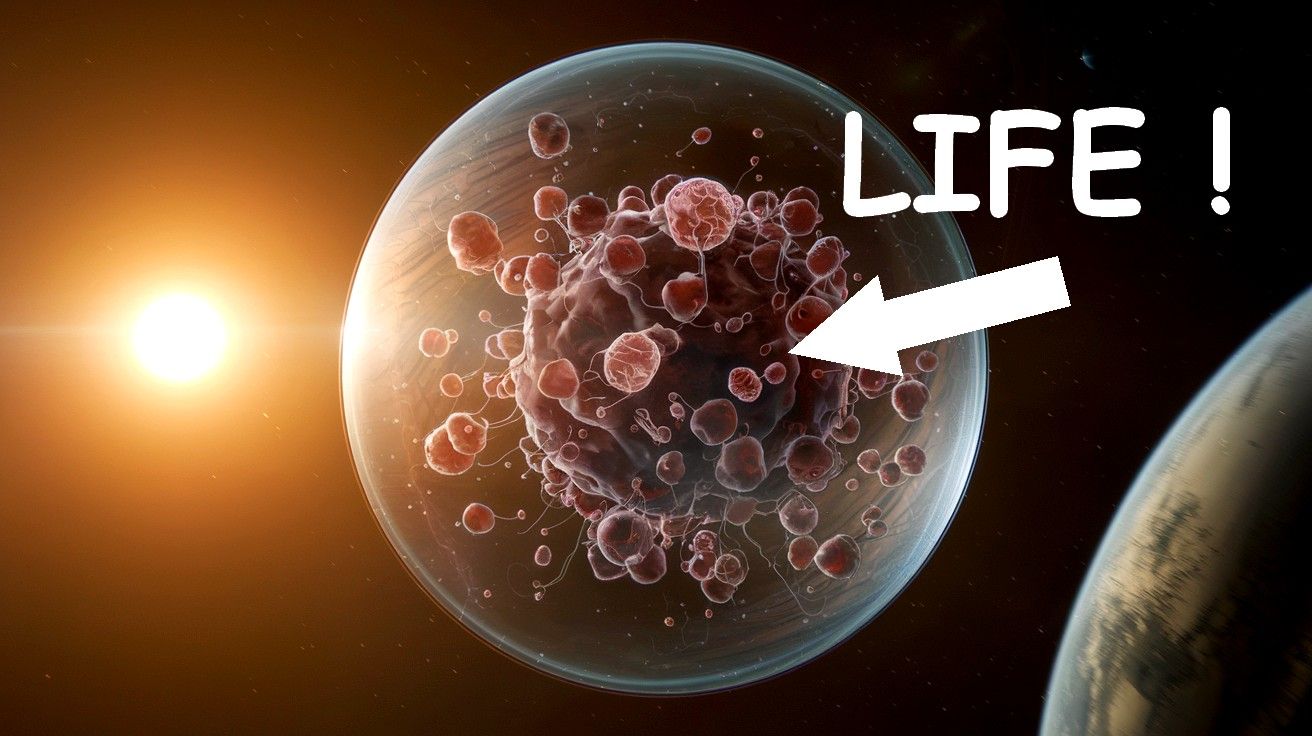Could extraterrestrial life thrive without a planet? 👽
Published by Cédric,
Author of the article: Cédric DEPOND
Source: Astrobiology
Other Languages: FR, DE, ES, PT
Author of the article: Cédric DEPOND
Source: Astrobiology
Other Languages: FR, DE, ES, PT
Follow us on Google News (click on ☆)
Imagine organisms floating freely in space, self-sufficient and capable of surviving in the Universe's most hostile conditions.

Researchers are beginning to explore the possibility that life could exist without a planet, drawing inspiration from extreme earthly creatures like tardigrades, which are capable of surviving in the vacuum of space. A recent article in Astrobiology suggests that extraterrestrial life could thrive in self-sustaining habitats drifting through space without gravitational or atmospheric support.
To survive, these biological colonies would need protective structures to maintain internal pressure and simulate a greenhouse effect, in order to keep a stable temperature for liquid water. Thin, rigid membranes could mimic Earth's greenhouse effect by regulating light, much like the Sahara silver ant does to survive the desert heat.
The absence of gravity would make it difficult to retain certain light elements, but asteroids could provide a supply of carbon and oxygen essential to such a colony.
Positioned in the habitable zone of a star, these colonies could capture the necessary starlight for their vital processes, potentially becoming self-sufficient. Researchers are envisioning biological colonies up to 328 feet (100 meters) in diameter, covered by a transparent membrane stabilizing water, pressure, and internal temperature — a true bio-engineered space habitat.
This model is already inspiring concepts for human habitats in space, which could one day replace metal stations with sustainable ecosystems, no longer reliant on Earth's resources.
What is a "living habitat" for extraterrestrial life?
"Living habitats" are biological structures capable of maintaining survival conditions for life without depending on a planet. These ecosystems can retain essential elements, regulate temperature, and maintain internal pressure, allowing organisms to evolve in space.
In order for them to work, these habitats must use insulating materials such as semi-translucent membranes that capture light, retain heat, and filter harmful rays. This “mini-greenhouse effect” would preserve a temperature conducive to liquid water, essential for life as we know it.